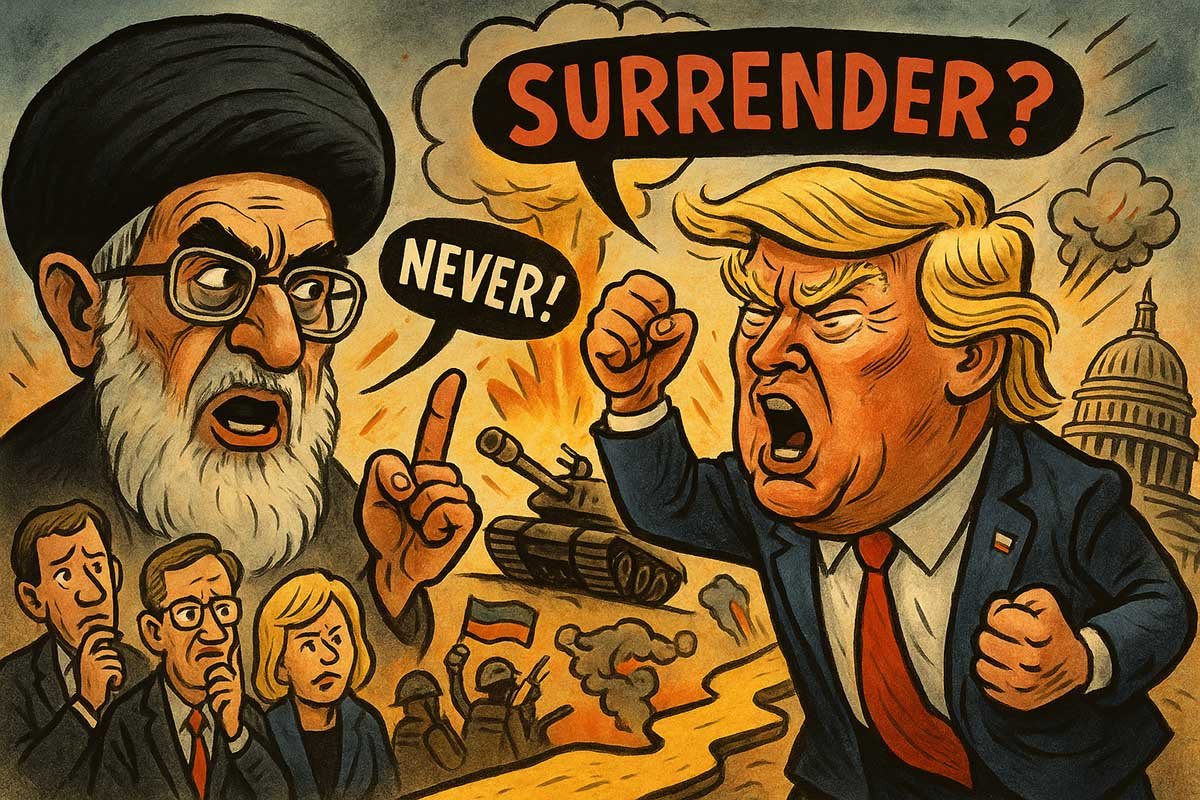The crisis in the Middle East has reached a new inflection point, with Iran’s Supreme Leader Ali Khamenei publicly rejecting demands from Donald Trump for Iran’s “unconditional surrender” as the price of de-escalation. Instead, Khamenei is issuing a blunt warning to Washington: any US military involvement will trigger “irreparable consequences” across the region—a phrase now echoing through capitals from Jerusalem to Brussels.
Khamenei’s stance is clear: Iran, he insists, will “never surrender” to external pressure, least of all from an American administration that has returned to the rhetoric of regime change and ultimatum. Addressing a country battered by years of sanctions and now confronting a multi-front conflict with Israel, Khamenei framed the showdown as existential: not just for Iran’s regime, but for its place in the regional order.
Multiple sources confirm that Khamenei’s warning is directed not only at Washington, but also at America’s network of allies and “proxies”—code for Israel, Gulf states, and European powers. The Supreme Leader has explicitly ruled out any negotiations with Israel, further narrowing diplomatic off-ramps as fighting intensifies.
Behind Khamenei’s defiance lies deepening anxiety in Tehran’s power circles. International analysts describe a regime “backed into a corner” by the combined threat of Israeli airstrikes and the possibility of direct US intervention. The Supreme Leader, long seen as an architect of resistance, now faces what could be the ultimate test of his political survival—and the Iranian state itself.
The stakes are not merely rhetorical. The Financial Times, Times of Israel, and other outlets report that Khamenei’s warning is being taken “with the utmost seriousness” by Western military planners. Some in Washington view Trump’s calls for unconditional surrender as a dangerous provocation, increasing the risk of a broader conflagration. European diplomats, meanwhile, are privately urging restraint—not that their influence appears to be swaying either side’s leadership.
The rhetorical battle is also playing out domestically. Iranian state media have framed Trump’s threats as proof of US weakness and desperation, rallying hardliners and painting the conflict as a test of national resolve. For many Iranians, decades of confrontation with Washington have produced a siege mentality; Khamenei, however embattled, still commands a core of loyalists who see resistance as the only viable option.
The risk calculus is stark. With Khamenei refusing to bend and Trump escalating demands, the space for compromise is vanishing. The international community is left to watch, anxious and largely powerless, as two implacable antagonists drag the region to the brink.
For Khamenei, survival now means doubling down on the very defiance that has defined his rule. For Trump, it’s a test of how far the art of the bluff can go before history stops calling. As of today, the world is learning just how thin the line between deterrence and disaster can be.
